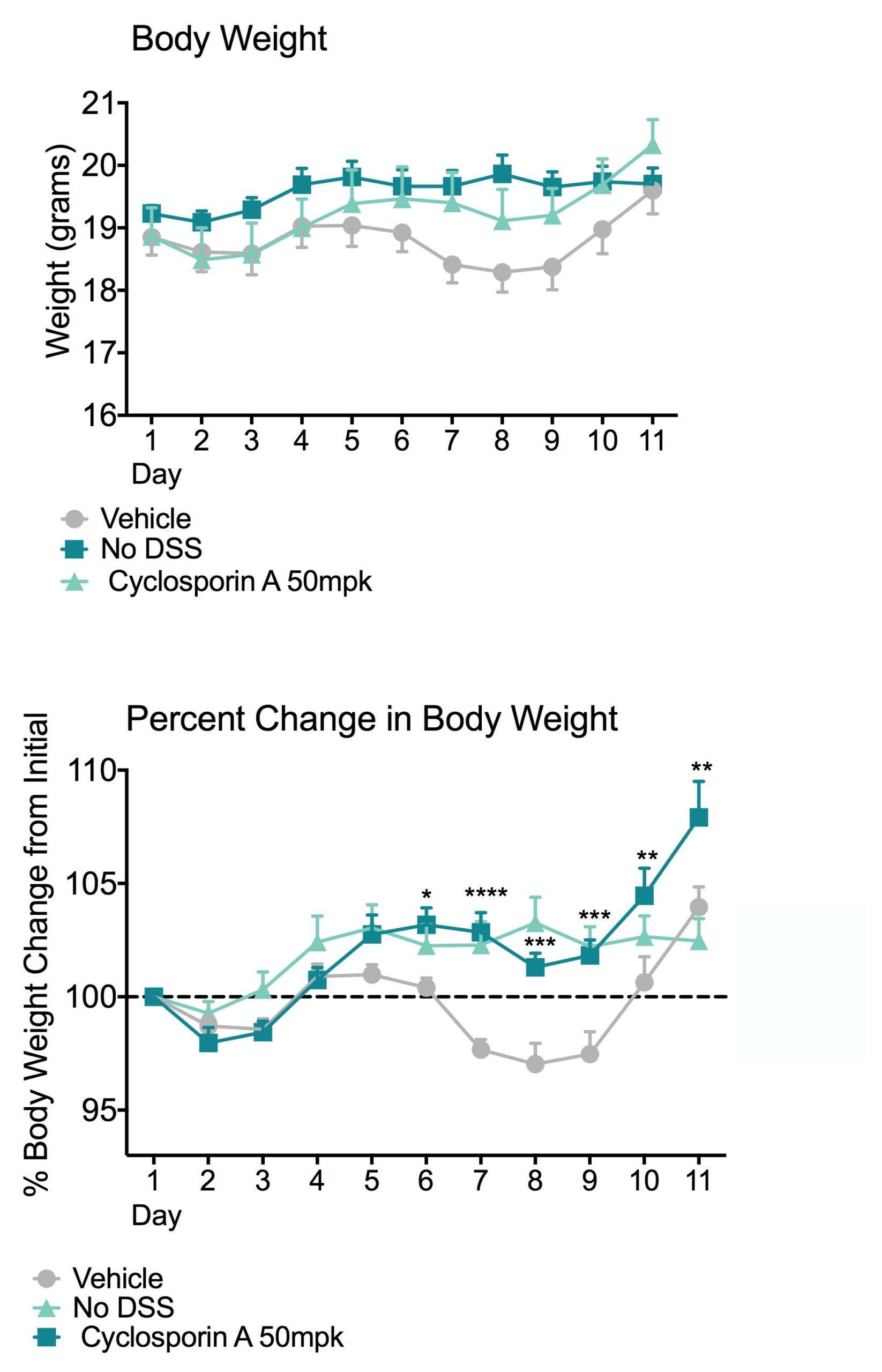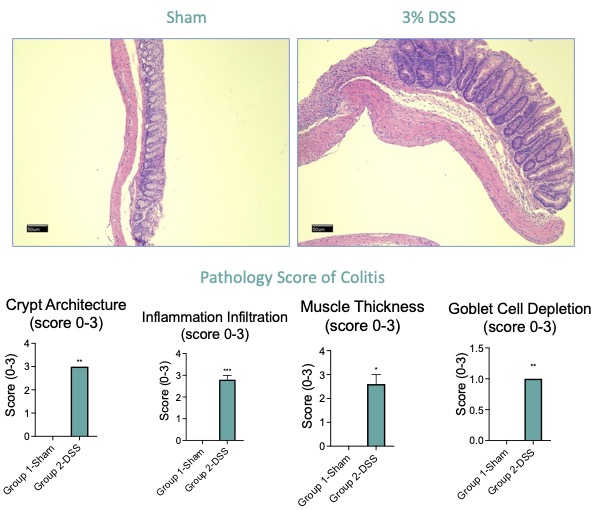DSS-Induced Model of Colitis
Discover how Melior’s unique phenotypic screening platforms can uncover the untapped value of your candidate therapeutic
Inflammatory bowel disorders (IBD), including colitis, are destructive diseases.
In this model, IBD is induced through administration of dextran sodium sulfate (DSS) in the drinking water of mice. This results in epithelial damage and a robust inflammatory response in the colon lasting several days. Rodents that are treated with DSS develop inflammation of the colon, exhibit diarrhea, rectal bleeding and weight loss. At Melior, we have established a chronic model of DSS-induced colitis.
Ready to get started or looking for a custom model?
Contact us today for more information about our bespoke research models and to discuss how we can help you answer your unique research questions.
Body Weight and Percent Change in Body Weight. Mice were dosed with vehicle or Cyclosporin A daily for 11 days. For five days, animals were administered DSS via drinking water. The remaining days animals were provided regular drinking water. Body weights were measured daily. The Cyclosporin A mice did not display the weight loss observed in vehicle treated mice (Figure A and B). Data are mean ± SEM and were analyzed using a two-way ANOVA; *p<0.05, **p<0.01, ***p<0.001, ****p<0.0001 compared to vehicle-treated mice.
Colon Length and Weight. Animals were dosed with vehicle or Cyclosporin A for 11 days. For five days, animals were administered DSS via drinking water. The remaining days, animals were provided regular drinking water. Colons were removed on day 11 of the study and the length and weights were recorded. There was no significant difference in colon lengths (C) or weights (not shown) between the groups.. However, the ratio of colon weight / colon length was evaluated there was a significant reduction with DSS treatment (D). Data are mean ± SEM and were analyzed using One-Way ANOVA; *p<0.05 compared to vehicle.
Colon Histology. For five days, animals were administered DSS via drinking water. The remaining days, animals were provided regular drinking water. Colons were removed on day 11 of the study, post-fixed in 10% formalin and paraffin embedded. Colons were sectioned into 5 µm slices, stained with hematoxylin and eosin and scored by a blinded pathologist. The bar in the bottom left of each micrograph depicts 50 µm. The quantifications scores in the bar graphs represent mean ± SEM. Results were analyzed by ANOVA; *p<0.05, p<**0.01 compared to sham control.
Frequently Asked Questions
Colon length and colon weight/length ratio are commonly used endpoints. Histology and histopathology can also be added to understand the histological changes the colon undergoes during the model.
Dextran sulfate sodium (DSS) is a sulfated polysaccharide with variable molecular weights. Administration of DSS causes human ulcerative colitis-like pathologies due to its toxicity to colonic epithelial cells, which results in compromised mucosal barrier function. Clinical observations similar to human pathologies, such as weight loss, diarrhea and occult blood in stool are commonly observed in the DSS model.
Synonyms: IBS, colitis, Inflammatory Bowel Disease, IBD







 Interested in running a DSS Colitis study?
Interested in running a DSS Colitis study?